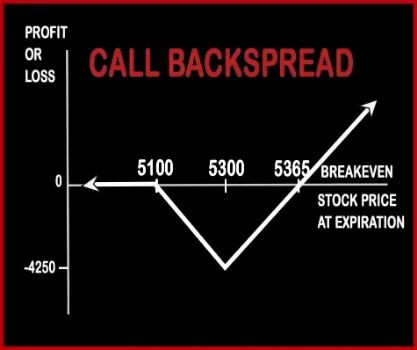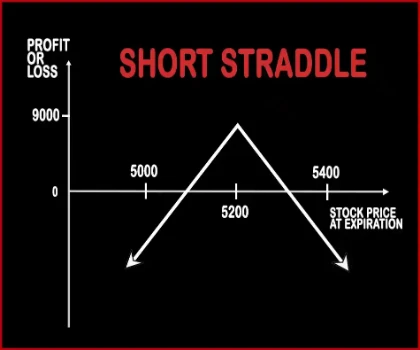Compare Strategies
| CALL BACKSPREAD | SHORT STRADDLE | |
|---|---|---|

|

|
|
| About Strategy |
Call Backspread Option Trading This strategy is adopted by traders who are bullish in nature. He expects market and volatility to rise in the near future. A trader need not be direction specific here (i.e. an upward or downward trend, but a small bias towards an uptrend should always be present, as the gains will be much higher once the market moves up r |
Short Straddle Option strategyThis strategy is just the opposite of Long Straddle. A trader should adopt this strategy when he expects less volatility in the near future. Here, a trader will sell one Call Option & one Put Option of the same strike price, same expiry date and of the same underlying asset. If the stock/index hovers around the same levels then both the options will expire worthless an .. |
CALL BACKSPREAD Vs SHORT STRADDLE - Details
| CALL BACKSPREAD | SHORT STRADDLE | |
|---|---|---|
| Market View | Bullish | Neutral |
| Type (CE/PE) | CE (Call Option) | CE (Call Option) + PE (Put Option) |
| Number Of Positions | 3 | 2 |
| Strategy Level | Advance | Advance |
| Reward Profile | Unlimited | Limited |
| Risk Profile | Limited | Unlimited |
| Breakeven Point | Lower breakeven = strike price of the short call, Upper breakeven = strike price of long calls + point of maximum loss | Lower Breakeven = Strike Price of Put - Net Premium, Upper breakeven = Strike Price of Call+ Net Premium |
CALL BACKSPREAD Vs SHORT STRADDLE - When & How to use ?
| CALL BACKSPREAD | SHORT STRADDLE | |
|---|---|---|
| Market View | Bullish | Neutral |
| When to use? | This strategy is used when the investor expects the price of the stock to rise in the future. | This strategy is work well when an investor expect a flat market in the coming days with very less movement in the prices of underlying asset. |
| Action | Sell 1 ITM Call, BUY 2 OTM Call | Sell Call Option, Sell Put Option |
| Breakeven Point | Lower breakeven = strike price of the short call, Upper breakeven = strike price of long calls + point of maximum loss | Lower Breakeven = Strike Price of Put - Net Premium, Upper breakeven = Strike Price of Call+ Net Premium |
CALL BACKSPREAD Vs SHORT STRADDLE - Risk & Reward
| CALL BACKSPREAD | SHORT STRADDLE | |
|---|---|---|
| Maximum Profit Scenario | Unlimited profit potential if the stock goes in upward direction. | Max Profit = Net Premium Received - Commissions Paid |
| Maximum Loss Scenario | Strike Price of long call - Strike Price of short call - Net premium received | Maximum Loss = Long Call Strike Price - Short Call Strike Price - Net Premium Received |
| Risk | Limited | Unlimited |
| Reward | Unlimited | Limited |
CALL BACKSPREAD Vs SHORT STRADDLE - Strategy Pros & Cons
| CALL BACKSPREAD | SHORT STRADDLE | |
|---|---|---|
| Similar Strategies | - | Short Strangle |
| Disadvantage | • Unlimited risk. • If the price of the underlying asset moves in either direction then huge losses can occur. | |
| Advantages | • Unlimited profit potential. | • A trader can earn profit even when there is no volatility in the market . • Allows you to benefit from double time decay. • Trader can collect premium from puts and calls option . |